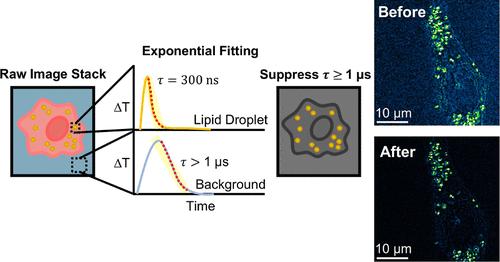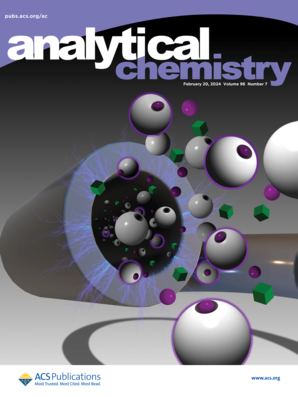Background-Free Mid-Infrared Photothermal Microscopy via Single-Shot Measurement of Thermal Decay
IF 6.7
1区 化学
Q1 CHEMISTRY, ANALYTICAL
引用次数: 0
Abstract
Mid-infrared photothermal (MIP) microscopy is an emerging tool for biological imaging, offering high sensitivity, subcellular resolution, and rapid image acquisition. However, the MIP signal of low concentration molecules in biological systems is often hindered or masked by background absorption, largely contributed by water, resulting from the H–O–H scissors-bending band in the fingerprint window or the bend-libration combination band in the cell-silent window. To preserve all desired signals while suppressing the background, we report a single-shot time-resolved MIP measurement that allows differentiation between the background and analyte signal based on their distinct photothermal dynamics. The results show that the thermal decay of the background is significantly longer than that of the desired intracellular signal, mainly due to the larger mass and heat capacity of water compared to those of intracellular features. Through two-component exponential fitting, we successfully differentiated and suppressed the background, while preserving the desired intracellular signal in both the fingerprint and cell-silent windows. By leveraging the thermal dynamics differences obtained from a single-shot measurement, we effectively remove the background and enhance the detection of small signals in a biological system.

求助全文
约1分钟内获得全文
求助全文
来源期刊

Analytical Chemistry
化学-分析化学
CiteScore
12.10
自引率
12.20%
发文量
1949
审稿时长
1.4 months
期刊介绍:
Analytical Chemistry, a peer-reviewed research journal, focuses on disseminating new and original knowledge across all branches of analytical chemistry. Fundamental articles may explore general principles of chemical measurement science and need not directly address existing or potential analytical methodology. They can be entirely theoretical or report experimental results. Contributions may cover various phases of analytical operations, including sampling, bioanalysis, electrochemistry, mass spectrometry, microscale and nanoscale systems, environmental analysis, separations, spectroscopy, chemical reactions and selectivity, instrumentation, imaging, surface analysis, and data processing. Papers discussing known analytical methods should present a significant, original application of the method, a notable improvement, or results on an important analyte.
 求助内容:
求助内容: 应助结果提醒方式:
应助结果提醒方式:


